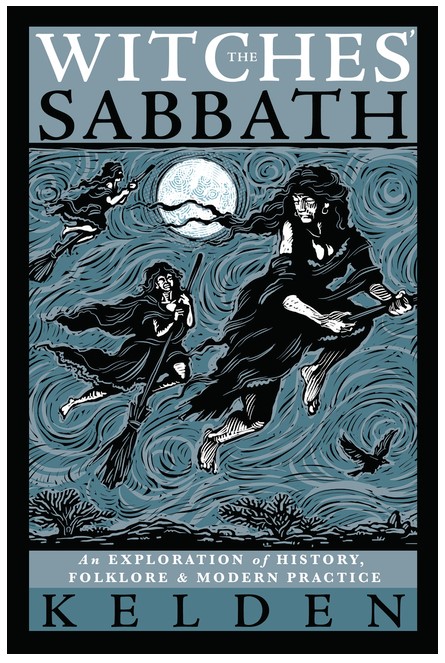
In Kelden’s second book, the traditional witch tackles a central part of the folk beliefs around withes: the witches sabbath. Not only does Witches Sabbath include solid scholarship, but instructions for the practicing witch to attend the sabbath.
The witches sabbath is a gathering of witches who meet with the devil for initiation, perfecting their craft, and party. Tales can be gruesome, and involve acts of cannibalism and incest. Kelden focuses on the common elements to create a narrative of the witches sabbath, although it feels like for every rule there is an exception. The sources are confessions of tried witches given under torture and writings by church fathers to repute or confirm beliefs about the sabbath.
I intended to review Kelden’s first book the Crooked Path, which was in my first lockdown package I ordered from Magus. But I had so many other books I wanted to review I never got around to it. I am grateful for the chance to see him in person again and hear him speak at this year’s Paganicon. I was able to get my book signed, and enjoyed chatting with him about adding magick to my weaving. If you have any interest in folk magick or traditional witchcraft, definitely take the opportunity to hear Kelden speak if you have it.
This is the first book I have seen with instructions on journeying to the sabbath. He did talk about going over the hedge in his previous book, although going to a sabbath is a more specific goal than hedgewalking. I am glad he included instructions on making a protection charm and expelling a bad spirit. While I personally think most of the spirit world is not malevolent, they aren’t benevolent either, and we do need to know how to protect ourselves.
I feel I have to write 2 reviews for this book, one for the historical information and the other for the Sabbat witchcraft piece. Our main source of information on witches sabbaths is the testimony of accused witches, which is problematic because torture was often used. We can’t be sure how much is manipulation by inquisitors or delusions brought on by torture. Kelden also doesn’t talk about the politics of different countries that might have influenced the sabbath narrative. To be fair, that would be an entire book and there are probably academic works that explores that. The Night Battles by Carlo Ginzburg is an excellent book that pulls out elements of testimony not in the sabbath narrative. The historical section in Witches Sabbath should be read by anyone interested in witchcraft.
The section on going to the Sabbath I would squarely put for the intermediate practitioner. Partially because I am wary of journeying alone without proper safeguards. His first book is one someone with no experience could pick up and start practicing. But to attempt to attend the witches sabbath one should already have some knowledge and be good at some witchy skills.
The Witches Sabbath is a book with excellent information, both historical and magickal. Kelden is an excellent author who grounds his writing in academic research, but clearly is an experienced witch. This book belongs on the witches bookshelf, even if it does have some more advanced material.
